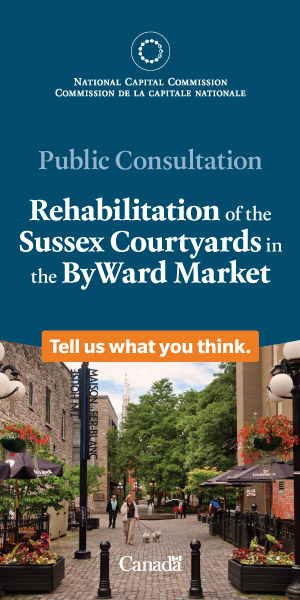
Fire Safety in First Nations communities is a challenge. Overcrowding and housing repair remain a concern and are just a few of the many factors that contribute to this tragic situation*1.
In the early 2000’s, the Canada Mortgage and Housing Corporation (CMHC) reported that members of First Nation communities across Canada were 10.4 times more likely to die in a fire than the rest of Canadians, per capita. Since then, we have continued to experience fatalities throughout other Nations such as the Inuit and Metis Nations.
A recent report released by Statistics Canada, commissioned by the National Indigenous Fire Safety Council Project (NIFSC) and funded by Indigenous Services Canada, examined the mortality and morbidity related to fire, burns and carbon monoxide poisoning among First Nations people, Métis and Inuit. This study indicated that Indigenous People are over five times more likely to die in a fire. That number increases to over 10 times for First Nations people living on reserves. Inuit are over 17 times more likely to die in a fire than non-Indigenous people. Rates among Métis were higher than non-Indigenous estimates (2.1), but these rates were not significantly different. The study further stated that “The mortality and morbidity rates provided by the new Statistics Canada report are grim but underscore the vision for the National Indigenous Fire Safety Council.” The NIFSC Project has launched programs that include education and training in the areas of community fire safety, community governance support, community infrastructure and engineering support, fire department management, fire investigation services, and fire department operations; all of which are offered to First Nations populations living on reserve. You can see the full report on the NIFSC website: www.indigenousfiresafety.ca/mortality-and-morbidity-report-2021.
A sad reflection of my own thoughts as I connected the dots through my recollection of fire investigations that I have conducted in my Treaty Areas of 6, 7, and 8. I have found that there was limited fire prevention or public education available to the Nations. I would like to see nations placing more importance on fire and life safety prevention and public education so that we can stop fires from happening. Of course, communities must balance the needs of housing programs, water, sewer etc. but fire prevention must be a priority. It is much better to stop a fire from happening than to respond in the hopes of putting it out.
It is important that First Nations develop fire and life safety public education programs and try to reduce property damage, injury and fatalities, while still preserving our traditional land stewardship. 60% of First Nations across Canada live in the vastly forested areas and many may not be participating in FireSmart programs focused on reducing fire loads in their communities. FireSmart Canada has an initiative where they highlight stories of fire stewardship in Indigenous Communities. Blazing the Trail: Celebrating Indigenous Fire Stewardship is an inspirational for all Indigenous peoples. Forest dwellers, women, and local communities Joji Cariño is another recommended read on this subject: http://www.nafaforestry.org/ff/download/volume_5_topic_29_.pdf.
To add more fuel to the fire, we also need to look at other fire prevention measures in fire risk. First Nation communities that evaluate fire risk in their backyard will determine the types of programs needed to reduce risks facing their specific communities. Data on everything – from testing smoke alarms to cigarette smoking to cooking safely can be compiled and measured. With this information, the Indigenous Fire Marshal Service (IFMS) can assist First Nation communities in their Community Risk Reduction Plans. Data-based decision making will support better outcomes.
COVID-19 has made it harder to reduce the number of incidents, as more of our families are spending longer hours at home. This extra pressure on fragile infrastructure is why it is so important to focus on fire prevention and safety in the home right now. Talking with other First Nation fire departments across Canada, I have heard some great ideas like creating an app through the Band Office Facebook account where the home occupant can conduct their own fire safety assessment and setting up video calls between the fire officer and the home occupant for a virtual search of hidden hazards.
I also see this as a great opportunity for our youth to share their ideas for how we might use technology to overcome the physical limits that the pandemic has put on us while also sharing safety messaging to everyone.
I encourage our First Nations, Metis, and Inuit to support the efforts of the IFMS. In turn, the IFMS can support your fire departments, community champions, and our future generations in fire and life safety. It is imperative that we reduce these numbers and look to each other, and help each other, as Turtle Island and Mother Earth need us to do.
Akimaymok (Keep On Going – Cree)
*1 – More information on the 2016 census portrait can be found here: https://www12.statcan.gc.ca/census-recensement/2016/dp-pd/abpopprof/infogrph/select.cfm?Lang=E
Leon Smallboy is from the Ermineskin Cree Nation in Maskwacis, AB. In his role as Deputy Regional Fire Marshal with the Indigenous Fire Marshal Service he works with communities and their fire departments to conduct fire department assessments, home safety assessments, and community fire safety assessments. Leon started in the fire service over 25 years ago with Maskwacis Fire Rescue service before joining the Technical Services Advisory Group, working with all levels of governments and First Nations in Alberta. Leon serves as the Indigenous Director on the Board of Directors of the Canadian Volunteer Fire Services Association and was the past Board President of the Aboriginal Firefighters Association of Canada.











